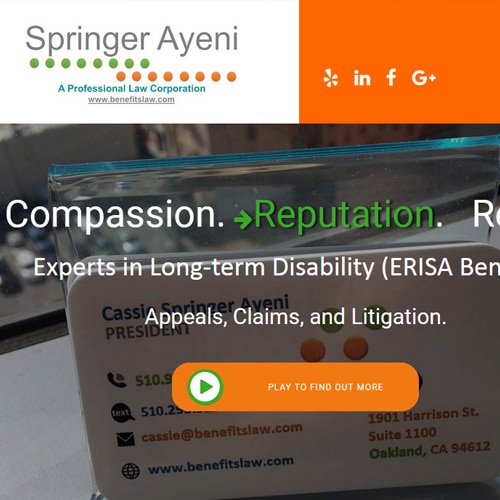
Cassie Springer Ayeni Named SuperLawyer 6 Years in a Row
For the 6th consecutive year, Cassie Springer Ayeni has been named a SuperLawyers Top 50 Women Attorney for Northern California, and a Top 100 Attorney for the 5th consecutive year. She has been named to the SuperLawyers list for her expertise in employee benefits for 8 consecutive years.
Read More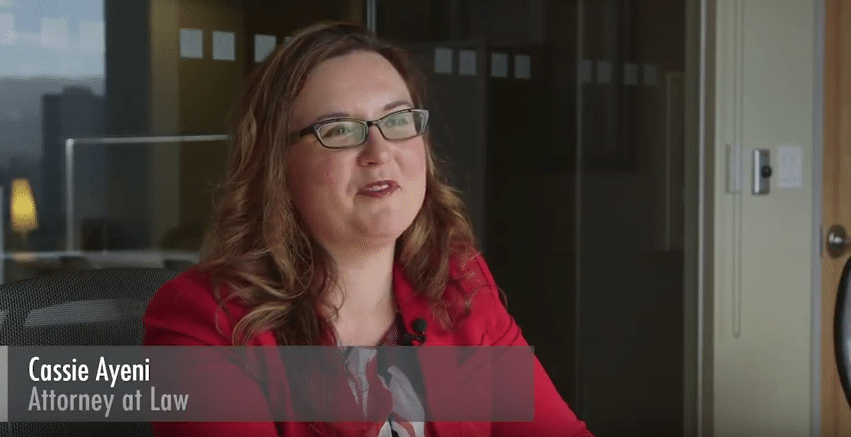
Incoming chair message to Employee Benefits Committee
So much has happened in these few months since I wrote this message to the Employee Benefits Committee as one of its incoming co-chairs. Since then, we had a successful midwinter meeting in Rancho Mirage, but none of us knew that would likely be our last travel occasion for the foreseeable future. Here’s a blast from the near past, which feels like a lifetime ago:
Read More
Here’s a blast from the near past, which feels like a lifetime ago
So much has happened in these few months since I wrote this message to the Employee Benefits Committee as one of its incoming co-chairs. Since then, we had a successful midwinter meeting in Rancho Mirage, but none of us knew that would likely be our last travel occasion for the foreseeable future. Here’s a blast from the near past, which feels like a lifetime ago:
Read More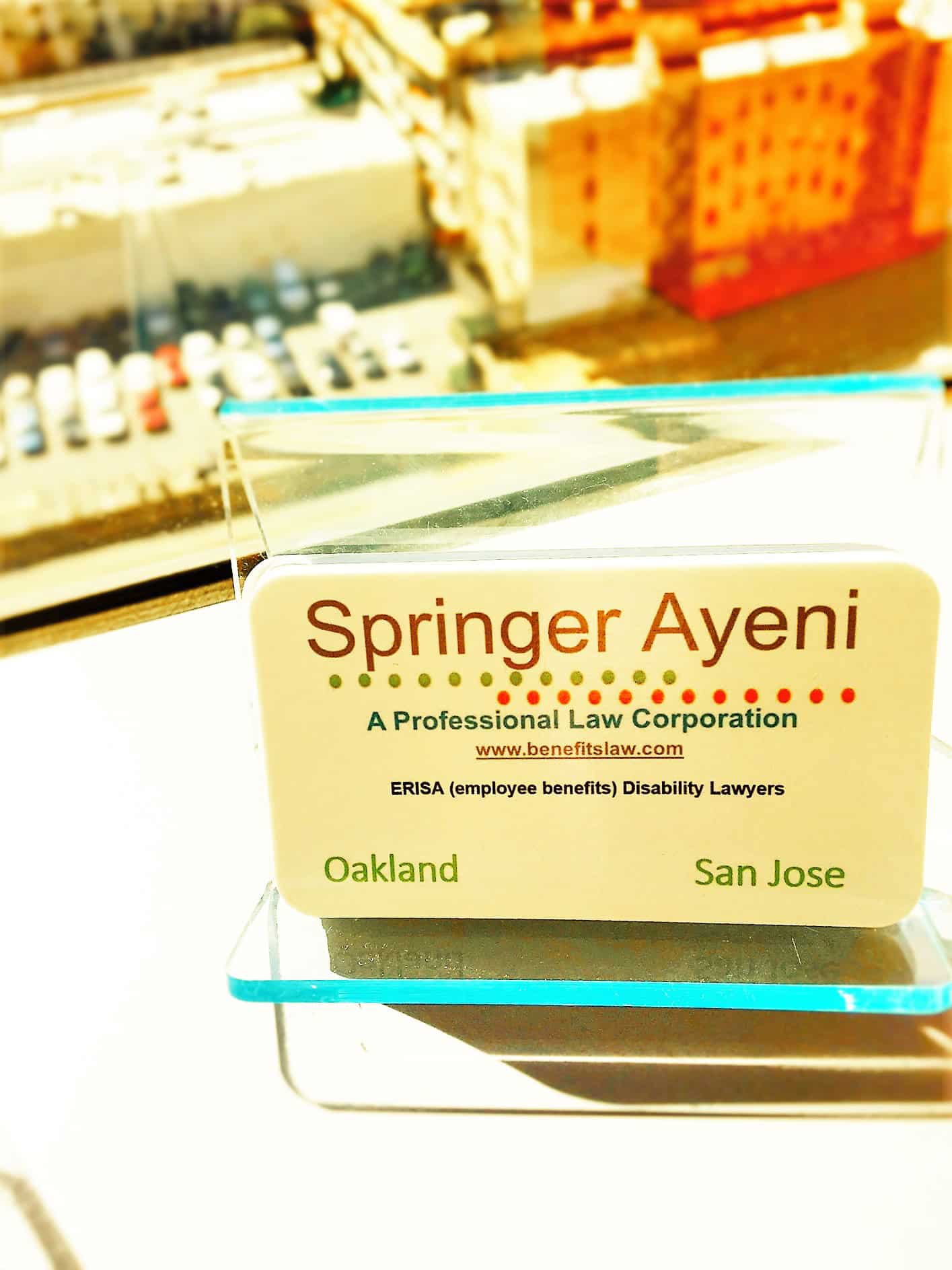
Springer Ayeni Wins Disability Case Against Aetna
Even in tough times, we are grateful for the hard-working judges and court personnel who continue to decide cases and keep the wheels of justice turning. On March 24, 2020, the attorneys at Springer Ayeni achieved a victory for our client, a man disabled by shoulder pain and denied disability benefits by Aetna Life Insurance Company. Judge Chesney of the Northern District of California ordered benefits paid for Mr. Shaikh’s own occupation and remanded for a determination on the amount. The Court found that Aetna “overly focused” on objective medical evidence and “essentially disregarded” Mr. Shaikh’s credible complaints of pain. Springer Ayeni is now pursuing attorney fees against Aetna. https://law.justia.com/cases/federal/district-courts/california/candce/3:2018cv04394/329565/46/
Read More
A Conversation with Attorney Cassie Springer Ayeni
Q: When did you know you would pursue a career in the legal field?
CSA: As early as junior high or high school, I felt the need to advocate for others, to make a point to stand up for the kids who were being bullied or ostracized. I also realized around the same time that I truly enjoyed writing, reasoning, and debating. The law seemed a natural fit: I could use my skills to make a palpable difference in people’s lives. I had settled on a career in law by the time I was 16 and never looked back.
Q: Can you explain what types of cases an ERISA Attorney handles and why you chose this area of law?
CSA: I primarily help people with their employer-sponsored disability benefit claims. ERISA governs all private employer benefit plans, not just pension plans. Many employers provide disability benefit plans in addition to health and pension benefits. In fact, 65% of ERISA litigation is over denied disability benefit claims. The plans are often insured, and clients typically come to me after they stop working, apply for disability benefits to the insurance company, and are denied. I then step in to try to get their disability benefit income restored while they focus on their health.
Q: What is your approach or philosophy to winning or representing a case?
CSA: I lead with kindness. I want to understand truly what my clients have gone through medically, economically, and emotionally to get to this point in their lives, and how I can help. In representing a client, I am there for that person: I am responsive and listen with an open heart. I believe this the secret to winning a case as well – if I am doing my job right, I am painting a picture of the person and the case to help the court appreciate why my client is deserving of their disability benefits. I have the paintbrush and paint ready because I have spent months getting to know my clients and researching the law. And I also aim to be the best-prepared lawyer in the room with the most compelling brief … that helps too.
Q: If we interviewed all your past clients … what is “one” common word that comes up when they describe working with your law firm?
CSA: Compassion
Q: What are some of the most popular topics you are asked to lecture on?
CSA: I speak frequently on ERISA topics, especially in my current role as the co-chair of the ABA’s Employee Benefits Committee. I love presenting to newer attorneys about the fundamentals of ERISA litigation, because I am eager to energize attorneys about how engaging ERISA work is. ERISA is fun! The law is always evolving, providing constant intellectual stimulation, and practicing ERISA law is also a great way to help people in need. I also enjoy speaking to women about re-defining what it means to be a successful litigator, and how to challenge traditional law firm standards to achieve a better work-life balance.
Q: What advice would you give to young women who want to pursue a career as an Attorney?
CSA: Any woman who wants to pursue a career as an attorney should make sure that her potential work environment values diversity and inclusion, fosters a sense of belonging, and creates opportunities for women at every turn. If she is unable to find that environment, she should open her own law firm and create those opportunities herself.
Q: How do you maintain a work/life balance?
CSA: Being the owner of my firm allows me to make up the rules: I look to the best practices of progressive companies and pick policies that I believe are imperative to work/life balance for everyone. I figure that everything I need to raise four children and work full-time as an attorney is what everyone at my firm needs too. I offer unlimited PTO, great benefits, four months of fully paid maternity leave, the ability to bring children in to work as needed (in fact I have brought each of my babies into work until they needed another environment), the ability to work from home, and a practical approach to parenting … like closing the office on Halloween and Valentine’s Day so that we can all attend class parties without rushing to or from work. I, of course, avail myself of each of these policies, which is why I created them in the first place. That’s not to say that I don’t wake up early to work for a bit so that I can focus fully on my kids to take them to school, or grab a few hours on the weekend to pound out a brief, but family always comes first, for me and for everyone who works at Springer Ayeni.
Q: What’s one lesson you’ve learned in your career that you can share with our audience?
CSA: I have always learned to be myself. If you are authentic, you are compelling as an advocate and a counselor: you listen and communicate better when you are not spending energy on worrying about how you should come across. I also believe in the power of preparation. If you are committed to doing your best and preparing your utmost, then even a negative outcome cannot be met with regret, but a positive outcome is much more likely. And if you’re nervous before a court appearance or speaking engagement, just take a breath and realize that even in a worst-case scenario, you will survive and move forward … we all do.
Q: What are some of the challenges you feel women face today?
CSA: Looking at women lawyers only, there is much progress to be made. As Joan Williams at the UC Hastings Center for WorkLife Law has analyzed convincingly, women lawyers (and women in other fields too) are asked to “prove it,” then “prove it again.” In other words, women need to do the job before getting the promotion, whereas men are promoted based on potential. This is a major obstacle to women’s promotion and needs to be addressed systematically.
Five Things About Cassie Springer Ayeni
1. If you could talk to one famous person past or present, who would it be and why?
There are so many! But if I had to pick one it would be Harriet Tubman – her courage and vision even in the face of medical problems were and are awe-inspiring.
2. What’s your favorite holiday? Why?
Valentine’s Day! I don’t view it as just a romantic holiday, but as a day to express to those around you how much you care.
3. If you were a superhero, what would your special powers be?
Time-traveling. That would be magical!
4. What app can’t you live without?
Facebook – it has allowed me to make great connections with other lawyer moms – lawmas!
5. Favorite food to eat?
Strawberries. Now, then, forever, and always.
See the interview at https://bayareawomenmag.com/news/view/11665/Her_Firms_Achievements_-_Results_are_Measured_by_the_Satisfaction_of_Her_Clients_A_Conversation_with_Attorney_Cassie_Springer_Ayeni
Read MoreERISA Disability Benefits At Work
Thanks to CNN for covering such an important story. I’m proud to represent this brave and amazing woman, Erika Zak. She was approved for her liver transplant at the last minute, but I was poised to file a complaint in the coming days if UHC had not finally done the right thing. Still, I wish it had reached this decision months ago. I hope she can now get the transplant as quickly as possible so that she will celebrate many more Mother’s Days to come. #livertransplant #ERISA #mothersday #Springerayeni #benefitslaw
https://www-m.cnn.com/2018/05/13/health/liver-transplant-mom-erika-zak/index.html
Read More
Long Term Disability (LTD): The Hidden Gem in Your Benefits Package

What is an LTD benefit?
Most long-term disability benefits are insurance policies that provide about 50-67% of your base income should you become disabled. What does it mean to be disabled? It will be defined in the policy, but typically it is defined as the inability to perform the material duties of your occupation due to illness or injury. After some time, usually 24 months, the definition of “disability” may change to the inability to perform the material duties of any occupation (taking into account your education, training, and prior income level) due to illness or injury. Mental illness disabilities are usually limited to 24 months of benefits in total.
Many illnesses or injuries can qualify you for a disability benefit. Examples include back, neck, knee, or upper extremity pain, migraines, fibromyalgia, cancer and its consequences, HIV/AIDS, pulmonary dysfunction, cognitive impairment, neurological conditions like Parkinson’s Disease, or chronic pain conditions. Disabilities do not just strike the elderly; my clients range from ages 29-67, with most of them being in their 50s. Yet they all have one thing in common: none were expecting to have to stop working before retirement age due to a medical problem.
Who has an LTD benefit plan?
Most professionals work for employers that provide disability benefit plans. These disability insurance policies have relatively low premiums, so employers often provide disability insurance to their employees as a matter of course. If you work for an employer that provides professional, medical, or technology services you are a prime example of someone who probably has a disability benefit plan through your employer. For example, I frequently represent doctors, nurses, and other medical professionals, lawyers, engineers, project managers, programmers, financial services professionals, executive directors, and even insurance claims adjusters. To see if you have disability coverage, look up your original benefits package or examine what benefits you elected. You can also look up your employer’s IRS Form 5500 filing, which should include details on ERISA retirement and “welfare” benefits such as health, disability, and life insurance benefit plans. ERISA is the law that governs almost all employer-sponsored benefits.
What to do if you need to apply for LTD benefits?
If your doctor has advised you to stop working, please verify whether your employer has an LTD plan or give me a call and I’ll help you figure it out. There are other benefits that might be available to you as well (state disability, Social Security, workers’ compensation, etc.), which I can outline for you. If your employer does have an LTD plan, bear in mind that the reason you stop working has to be because of your disability for you to have coverage and make a successful LTD claim. In some states, including California, late applications can still be accepted as long as the insurer is not harmed by your late claim notice. Typically, your last date of work is also your first date of disability. If you are laid off for performance reasons that are actually related to your disability, you may still have a good LTD claim, but call me to help you analyze it. (You may also have a disability discrimination claim.) If you 1) have an employer-sponsored LTD plan, 2) need to stop working because of a medical condition, and 3) your doctor has advised you to stop working and will fill out a form on your behalf, you should strongly consider applying for LTD benefits. These benefits may be available until age 65 or 67, so do not shy away from making an application! However, there are many traps along the road of applying for and receiving LTD insurance benefits, so feel free to reach out to me if you have any questions about whether you should apply or how to maximize your chances of receiving benefits.

#LTD benefits
My Patient Needs to Stop Work … Now What?
By Cassie Springer Ayeni, Disability and Life Insurance Benefits Lawyer
with Springer Ayeni, A Professional Law Corporation
cassie@benefitslaw.com . www.benefitslaw.com
It happens: your patient comes to an appointment, and after months or years of “getting by” at work, despite a degenerative or chronic condition, it is clear to you that those days are over. You recommend that for her health, she stop working. Now what?
What your patient now faces is a host of forms and requests from insurance companies and the government to ensure that she has some income even though she’s not working anymore. Besides savings (and it is unheard of for someone in the prime of her working life to have sufficient savings to live decently for the rest of her days), income sources for people with disabilities include:
- Employee benefit plans (short-term disability then long-term disability). Long-term disability usually starts after 6 months and can last until retirement age.
- Private disability insurance plans (also lasting until retirement age).
- State disability insurance that usually last for a year (like California’s EDD).
- Social Security Disability Benefits (available after being disabled for a year and lasting through retirement age).
To qualify for any of these benefits, the #1 thing that a patient needs is help and support from the doctor. Without it, she won’t be approved; and if support wanes in the future, the insurance companies won’t hesitate to cut off her benefits. Here’s what you can do to help ensure that your patient receives disability benefit income on time and without hiccups:
Medical Records
- Document the reason why the patient is disabled in the medical records. List as many objective findings as are available (ROM, atrophy, MRIs, visual findings, etc.), including your objective observations.
- Document in the medical records whether the patient’s complaints of pain, fatigue, or other disabling symptoms are credible.
- If the patient has worked with the condition, answer the question in the medical records of “why now?” Why was she able to work before with the condition but suddenly cannot? Has there been a worsening of symptoms? Do you feel that her best chance of getting better is by resting for a bit at home? Document your rationale in the medical records.
- When the patient gets approved for benefits, keep track of the symptoms in regularly scheduled check-ups; insurance companies request updated medical records every 6-12 months.
Forms Requests
- Be sure to complete and return forms as quickly as possible. Although it is tempting to punt the form-filling to a secretary, it is more credible when completed by you.
- If there are any boxes on the forms that not applicable to your patient, just write N/A or rephrase the question so it makes sense for your patient
- Beware of traps in the questions: If a question states “how often can your patient work? 3 hours, 6, hours, or 8 hours a day,” but you feel your patient could only work 1 hour a day with breaks and unreliable, don’t check a box; just write your true response.
Working with the Lawyers
- Thankfully, with the increasing popularity of medical-legal alliances, most physicians and lawyers now truly comprehend their shared interest in the patient’s well-being, and working together on the insurance requests helps for seamless communications with the insurer. A patient about to go on disability can benefit from a quick call to a benefits attorney to make sure that every “I” is dotted and “t” is crossed.
- A patient whose disability benefits claim has been denied should never attempt to appeal on her own without the benefit of some legal advice.
- Also, even when a patient is approved for benefits, don’t hesitate to ask her lawyer for help understanding the forms; the lawyer and the patient will appreciate it more than you know.
Cassie Springer Ayeni is the President and Founder of Springer Ayeni, A Professional Law Corporation, in Oakland, CA, where she focuses on ERISA disability and life insurance cases. She can be reached atcassie@benefitslaw.com or www.benefitslaw.com
Read More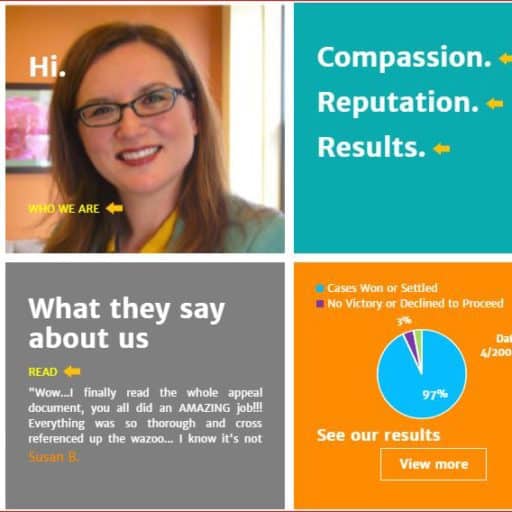
Know Disability Benefits Before Accepting A Job Offer
You found it: the perfect job for your next career move with a great salary. You are ready to give your acceptance! But before you do, understand what’s really included in the “benefits package” that your future employer described to you in broad strokes. Yes, there is health insurance and 401(k) matching, but an often-overlooked benefit that becomes crucial in a time of need is your employer’s long-term disability insurance benefit.
Many employers provide a long-term disability insurance policy to employees, which most employees could care less about because no one intends to be taken out of their profession by a disability. Yet a disability can come in many forms, and there are visible and invisible disabilities. You may be entitled to a disability benefit because you are recovering from a surgery, because you experience pain, because you have a degenerative condition, because you suffer from a brain injury, because you have a life-threatening condition, or due to mental health issues. Although you hope to never need to make a disability claim, it’s smart to be aware of what the plans provide should you need to make a short- or long-term disability claim.
The finances:
Disability insurance plans typically cover 60-66.67% of your base income. In general, if you pay the premiums with after-tax dollars as a payroll deduction, then the benefit is non-taxable. If your employer pays the premiums, then the benefit is taxable. Therefore, if you have the option, CHOOSE TO PAY THE PREMIUMS YOURSELF! The tax savings should you become disabled will be well-worth the monthly premium cost.
Disability insurance benefits typically pay through Social Security Normal Retirement Age, which is age 67 for those born in 1960 and later. A monthly income for the years when you are unexpectedly taken out of the workforce, particularly if your disability is expected to last for the rest of your life, is wonderful peace of mind.
Most disability insurance policies, however, cap the “maximum benefit” payable to a certain dollar amount per month. The lowest cap I’ve seen is $6,000 per month. The highest cap I’ve seen is $30,000 per month. If your plan has a low cap that would not be enough to sustain your quality of life if you become disabled, either reconsider the job offer or take our private disability insurance. You may even use this need for private insurance as a bargaining chip to negotiate for a higher salary, as such insurance is typically quite expensive.
The logistics:
Just because a disability benefit plan is offered, does not mean that approval for benefits under that insurance plan will be a piece of cake. If you have a disability that is degenerative in nature, take some time to plan your exit strategy over several months with your doctor’s advice. Work until your physician advises that you no longer should, and then seek the advice of an experienced ERISA attorney to guide you through the application process to ensure the best chance of success at the outset.
With some basic knowledge and the right planning, ERISA disability insurance benefits can be a valuable addition to your compensation package.
Cassie Springer Ayeni is the President of Springer Ayeni, A Professional Law Corporation, where she represents individuals in disability benefit applications, appeals, and lawsuits. She can be reached at www.benefitslaw.com
For more contact: Cassie Springer Ayeni
Read More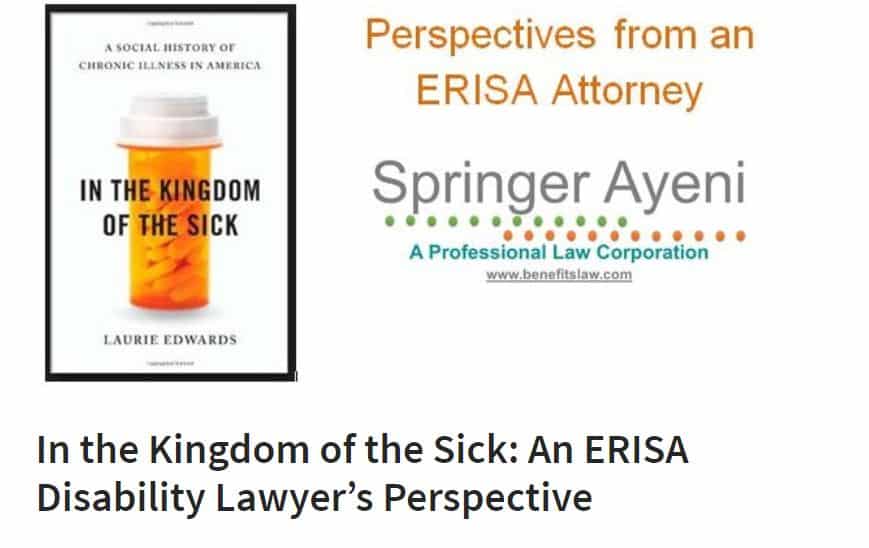
In the Kingdom of the Sick: An ERISA Disability Lawyer’s Perspective
In the Kingdom of the Sick: An ERISA Disability Lawyer’s Perspective
By Cassie Springer Ayeni
Springer Ayeni, A Professional Law Corporation
“‘Illness is the night-side of life, a more onerous citizenship. Everyone who is born holds dual citizenship, in the kingdom of the well and the kingdom of the sick . . . sooner or later each of us is obliged, at least for a spell, to identify ourselves as citizens of that other place.’” – In the Kingdom of the Sick at p. 4 (quoting Susan Sontag).
In Laurie Edwards’s book on chronic illness, In the Kingdom of the Sick: A Social History of Chronic Illness in America, she takes a broad approach to explain obstacles that people suffering from chronic illness currently encounter.
Chronic Illness Defined
Edwards identifies three primary traits in chronic illness: “the symptoms are invisible, symptoms and disease progression vary from person to person, and the disease progression and worsening or improvement of symptoms are impossible to predict.” (pp. 32-33.) She also notes that chronic illness is “treatable, not curable.” (p. 33.) Moreover, chronic illness is often accompanied by its life-altering companion, chronic pain, which can make it “excruciating to engage in physical activities, keep up with a regular work schedule, or even leave the house.” (p. 111.) And it is pervasive. According to Edwards, chronic illness, which includes heart disease, diabetes, cancer, and asthma, affects nearly 50% of the population. (p. 11.) An astounding 81% of hospital admissions are a result of chronic illness, as are 76% of all physician visits. (p. 11.)
Biases Against People with Chronic Illnesses
Edwards devotes much of In the Kingdom of the Sick to explaining the biases that those living with chronic illness encounter, both from an historical perspective and in the modern medical era. For example, Edwards notes that where conditions lack a cure, which is one of the inherent traits of chronic illness, “blaming the patient often follows suit.” (p. 6.) This bias of skepticism leads to potentially devastating consequences: “45 percent of patients with autoimmune disease were labeled as chronic complainers early in their diagnostic journeys, with the resulting delay in diagnosis often leading to organ damage from lack of appropriate treatment.” (p. 78.) In my experience representing ERISA disability claimants for the past 15 years, this inclination towards disbelief extends to the disability insurance context as well, where before a concrete diagnosis is reached insurers are inclined to deny a claim for disability benefits that are based on “self-reported symptoms,” and claimants who cannot seem to overcome their undiagnosed or misunderstood conditions are labeled as “malingerers.” Indeed, these biases have become so pervasive that the trend in long-term disability plans is to limit the duration of benefits payable for “self-reported conditions,” which is an ever-expanding group of non-fatal, but totally disabling conditions. Claimants are often left high and dry after receiving the maximum duration of benefits, but still prevented by their lifelong illnesses from returning to gainful employment.
Additionally, most ERISA disability plans are written with a 24-month or shorter maximum duration for “mental illness” conditions. However, as Edwards points out, people with chronic illness often have secondary depression and anxiety: “what if the person is anxious because he or she has been sick for weeks or months and physicians can’t seem to help? What if the person is depressed because he or she is at home sick, isolated from social events and falling behind in work?” (p. 107.) In my experience, many disability claims adjusters try to label the mental component as primary in order to justify limited payment duration, often ignoring the severity of the underlying physical condition.
Edwards also does an excellent job examining the historical and pervasive bias against illnesses that primarily strike women. She states: “throughout history, deeply ingrained ideas about women as unreliable narrators of their pain and symptoms, as weaker than men, and as histrionic or otherwise ‘emotional’ have had a profound impact on their ability to receive accurate diagnoses and appropriate care.” (p. 20.) Added to this inherent bias is the fact that until very recently, “[w]omen were navigating a hierarchical medical system dominated by males; women lacked knowledge and resources to advocate for their health.” (pp. 76-77.) Although times are changing as there are more women doctors and as studies are increasingly inclusive of women patients, women with chronic illnesses still encounter shades of these gender biases when diagnosed with conditions like chronic fatigue syndrome, where people “roll their eyes at [these patients] or come right out and tell [them] that CFS is a made up disease, a present-day hysteria, or that ‘everybody gets tired.’” (p. 103.)
Chronic Illness and ERISA Claimants
Edwards aptly notes that people with chronic illnesses are often not able to be accommodated by their employers, since the ability to maintain a regular work schedule is a job necessity. (p. 66.) A disability claim is the inevitable conclusion, where the claimants must then “prove” their disability to the insurer. However, the insurer may be skeptical because of the nature of chronic illness, where sufferers experience some days that are better than others. Edwards notes that such fluctuation is a hallmark of chronic illness: “The unpredictability of symptoms and their severity that sets chronic illness apart from certain physical disabilities can also make for ‘unreliable activists,’ individuals who might be able to run workshops or attend policy meetings one day and be bedridden the very next.” (p. 53.) The chronically ill ERISA claimant may encounter the same culture of skepticism in the insurance context that she likely already experienced when seeking treatment for what ultimately became a disabling condition. And this culture of disbelief extends to the health benefit context as well. Edwards poignantly recounts her own experience with chronic illness, stating “I am grateful for the excellent health insurance that I work incredibly hard to provide for my family, and even with that, there are always letters to write, explanations to offer, and battles to wage to convince the people in charge of approving claims that preventative care is truly medically necessary.” (p. 193.)
Skepticism in LTD benefit applications couples with the shame that many chronically ill patients experience in admitting disability to begin with. Edward quotes the experience of one woman who had to apply for Social Security Disability Insurance, which is often a requirement of ERISA LTD applicants: “‘I’m depressed about it because I prefer to live in denial that this is going to be a long-lasting or permanent condition. And I’m embarrassed because even though rationally I know SSDI is an insurance policy that I paid into since I got my first job at age fourteen, it feels like asking for a handout. Like it’s trying to go on welfare.’” (p. 55.)
And still another obstacle faced by many ERISA LTD applicants who are chronically ill is the shock of surveillance that captures “clustering” activities to periods of increased energy, which often then results of days of bed rest to make up for the exertion. Edwards notes that such behavior is a pain management technique rather than an indication of sustained energy, and details that chronically ill patients must engage in extensive planning ahead of time before engaging in everyday routines. (p. 103.)
A Validating Resource for Patients
Overall, In the Kingdom of the Sick is an excellent resource for people suffering from chronic illnesses to obtain comfort that their experiences of disbelief, bias, and isolation are not unique. However, because chronic illness is such an extensive topic, at times the book is painted in too-broad strokes. Edwards tries too hard to lump all chronic illnesses together, such as AIDS, CFIDS, and cancer, to draw the tenuous analogy that people are biased universally against those with chronic illness. The diseases and the movements behind the diseases may have some links, but are also very distinct, and each disease has its own social bias to overcome to generate more attention and funding.
In this lumping together, Edwards also misses the distinguishing factor in chronic pain conditions – most are not inherently fatal. She criticizes that the NIH spends 96% less money on chronic pain research than on cancer, cardiovascular disease, and diabetes combined, but these are all potentially life-threatening whereas chronic pain is perceived as more manageable.
Nevertheless, I would certainly recommend that my clients who are suffering from debilitating chronic illnesses read In the Kingdom of the Sick to understand the historical context of chronic illness and to understand the legitimacy of their own experiences and feelings surrounding their illnesses. I would also recommend that attorneys and doctors alike who are interested in being more compassionate caretakers of their clients and patients read this book. And, in a dream world, every insurance claims adjuster would read it too before making assumptions tinged with societal bias.
Cassie Springer Ayeni is the President and Founder of Springer Ayeni, A Professional Law Corporation, in Oakland, CA, where she focuses on ERISA disability and life insurance cases. She can be reached atcassie@benefitslaw.com or www.benefitslaw.com
Read More

